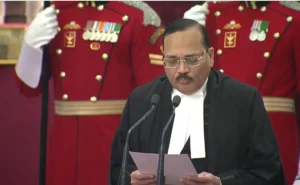India-Pakistan Ceasefire: In recent developments along the India-Pakistan border, tensions have escalated significantly, placing the historic city of Amritsar on high alert. You might be wondering what exactly has happened and how it affects the local population. Let’s break down this complex situation in straightforward terms.
India-Pakistan Ceasefire: The Current Situation in Amritsar
Amritsar, a city known for its cultural significance and the famous Golden Temple, now finds itself in a precarious position. Local authorities have issued strict advisories asking residents to remain indoors until further notice. The city’s normal bustling activity has ground to a halt as security forces establish checkpoints throughout key areas.
You can see the impact of these measures in everyday life – schools closed, markets empty, and public gatherings postponed indefinitely. The border region’s atmosphere remains tense as military personnel maintain vigilant watch over the international boundary.
India-Pakistan Ceasefire: What Led to This Ceasefire Situation?
The current alert status comes after a series of cross-border incidents that threatened to destabilize the fragile peace between India and Pakistan. Several violations of existing ceasefire agreements occurred in recent weeks, with both sides reporting casualties.
Reports indicate that civilian areas near the border faced shelling, resulting in multiple casualties including members of the Sikh community. Pakistan’s actions against civilian populations have drawn strong condemnation from international observers and human rights organizations.
- Cross-border firing intensified last week
- Multiple civilian casualties were reported
- Infrastructure damage in several border villages
- Diplomatic communications strained
India-Pakistan Ceasefire: The Human Impact
Behind the headlines and political tensions are real people facing genuine hardship. You might not realize how dramatically life changes for border residents during these flare-ups.
“We haven’t slept properly in days,” shares Gurpreet Singh, a farmer whose land sits just three kilometers from the international border. “The sound of shelling keeps my children awake at night. We’ve moved our essential belongings to relatives deeper inside Indian territory.”
For thousands like Gurpreet, the ceasefire violations represent more than political tension – they signal disruption to livelihoods, education, and basic safety.
Security Measures in Place
The Indian Border Security Force (BSF) has implemented comprehensive security protocols across the Amritsar district. You would notice significantly increased patrols along major roads leading to border areas, with special attention to vulnerable points identified from previous incidents.
Authorities have established emergency response teams equipped to handle various scenarios, including the potential evacuation of villages closest to the border. Medical facilities remain on standby, with additional staff and supplies allocated to handle any emergency situations.
India-Pakistan Ceasefire: Historical Context of India-Pakistan Border Tensions
To understand today’s situation, you need some context about the complex history between these neighboring countries. The border region has witnessed periodic escalations since Partition in 1947, with major conflicts occurring in 1965, 1971, and 1999.
The Amritsar sector holds particular significance due to its proximity to the Wagah border crossing, a location known for the famous daily border ceremony that symbolizes both rivalry and respect between the two nations.
Ceasefire agreements have been implemented multiple times over decades, yet maintaining lasting peace has proved challenging. The current situation follows a pattern familiar to those who follow regional politics closely.
International Response
The international community has expressed concern over the deteriorating situation. Several countries have urged both India and Pakistan to exercise restraint and return to diplomatic dialogue.
“We are closely monitoring developments along the India-Pakistan border and encourage both sides to adhere to established ceasefire protocols,” stated a spokesperson from the United Nations Secretary-General’s office.
Regional stability remains a priority for global powers with interests in South Asia, particularly given the nuclear capabilities of both countries.
India-Pakistan Ceasefire: What Happens Next?
While predicting the exact course of events remains difficult, experts suggest several possible scenarios:
- Diplomatic channels may facilitate de-escalation
- International mediation could help restart dialogue
- Local ceasefire arrangements might be established before broader agreements
- Humanitarian corridors could be created for affected residents
You should watch for announcements from both governments regarding diplomatic communications, as these often signal whether tensions will escalate further or begin to recede.
Safety Recommendations for Residents
If you live in or near Amritsar, authorities recommend:
- Stay updated through official government channels and verified news sources
- Keep emergency supplies ready including medication, water, and non-perishable food
- Follow all evacuation orders promptly if issued
- Report suspicious activity to local police immediately
- Avoid sharing unverified information on social media
Broader Implications
The current situation extends beyond immediate security concerns. Economic activities across Punjab have slowed considerably, with transportation networks disrupted and tourism—a vital income source for Amritsar—virtually halted.
Agricultural operations face particular challenges as many farms lie in sensitive border areas. The timing coincides with important seasonal activities for many crops, potentially impacting food supply chains if the situation persists.
India-Pakistan Ceasefire: The Path Forward
Ultimately, sustainable peace requires political will from leadership on both sides. Previous ceasefire agreements provide templates that could guide current negotiations, though addressing root causes remains essential for lasting stability.
You might feel discouraged by the cycle of tension and temporary resolution that has characterized India-Pakistan relations. However, civil society organizations continue working across borders to build people-to-people connections that transcend political differences.
As Amritsar waits for tensions to subside, the resilience of its people remains evident. Through centuries of being at the crossroads of conflict, the city has developed a remarkable capacity to endure challenges while preserving its cultural heritage and community bonds.
The situation continues to evolve rapidly, with developments potentially changing day by day. For those concerned about friends or family in the region, staying connected through reliable communication channels and trusted information sources offers the best way to navigate this uncertain period.








Be First to Comment